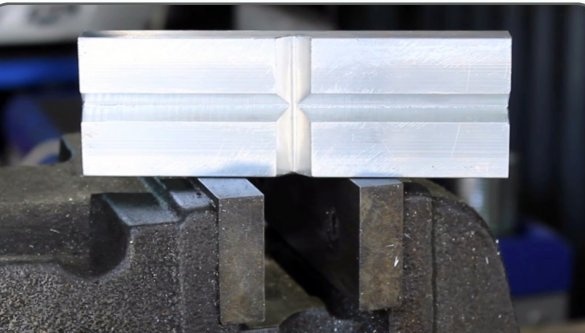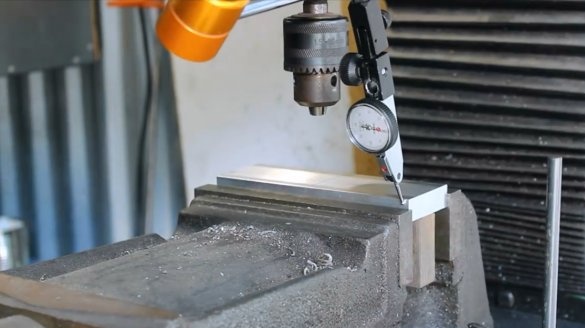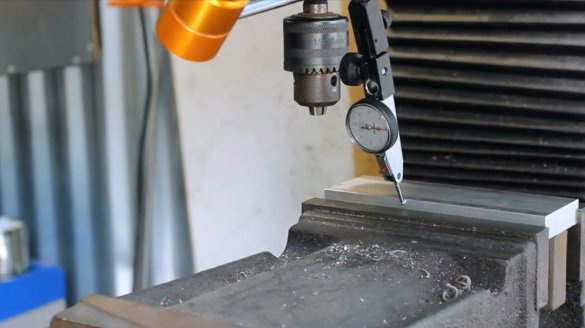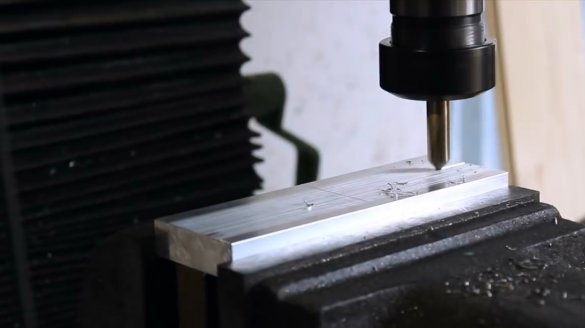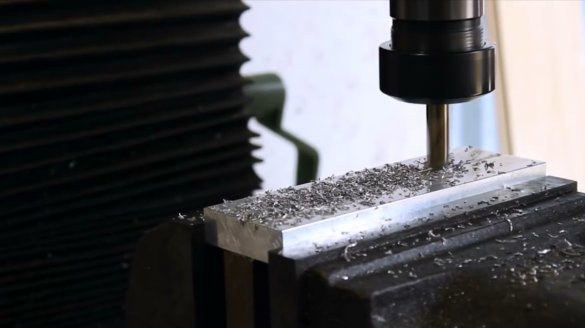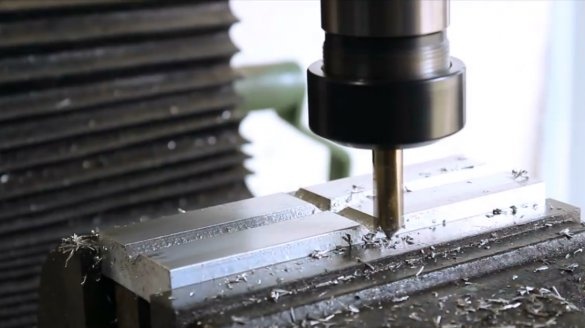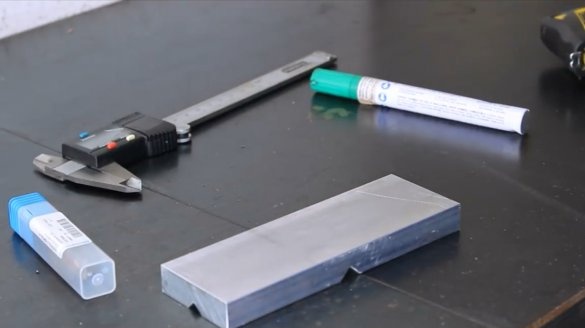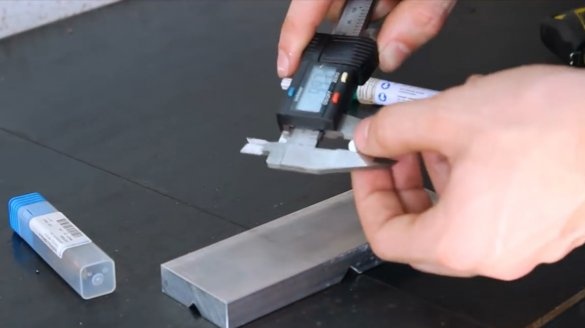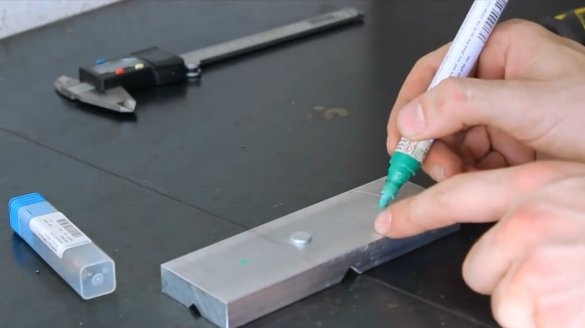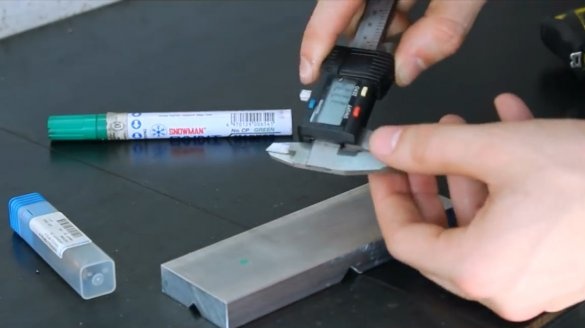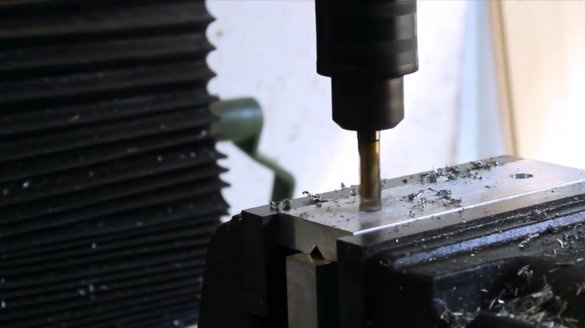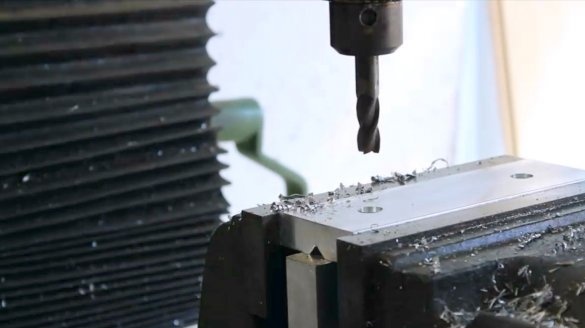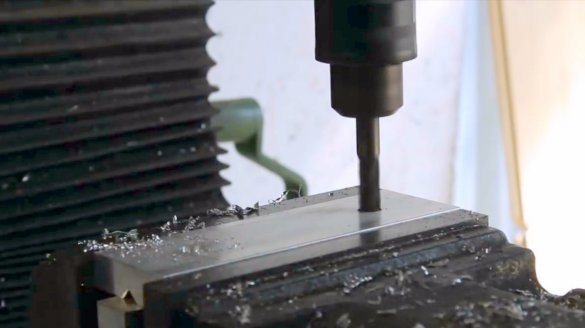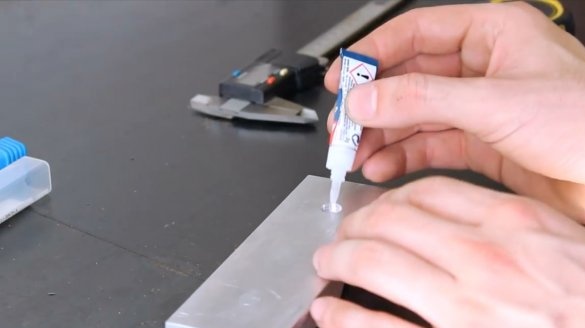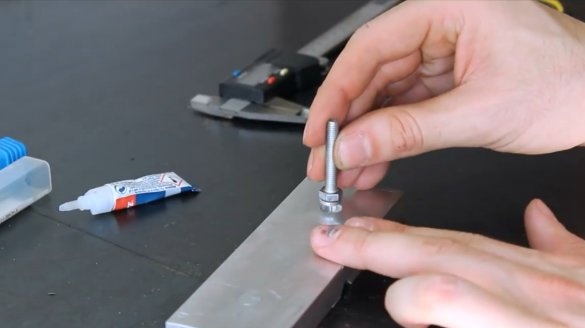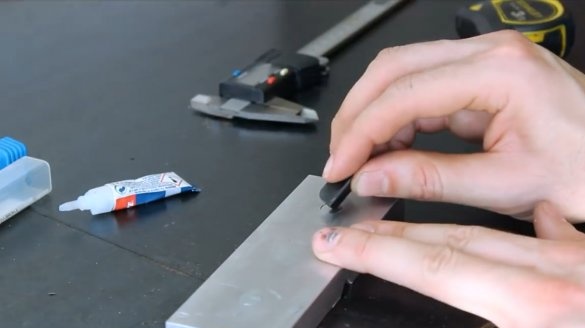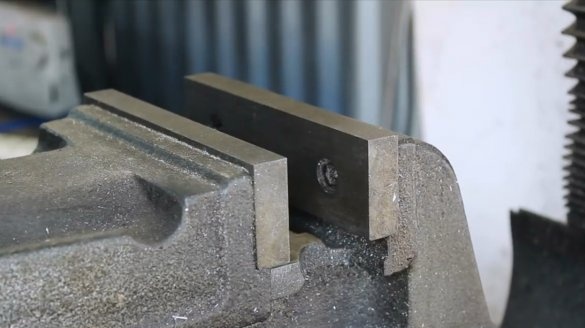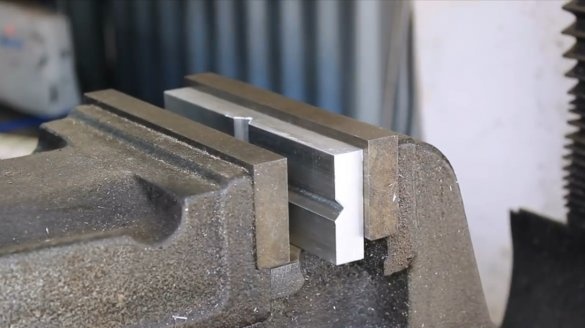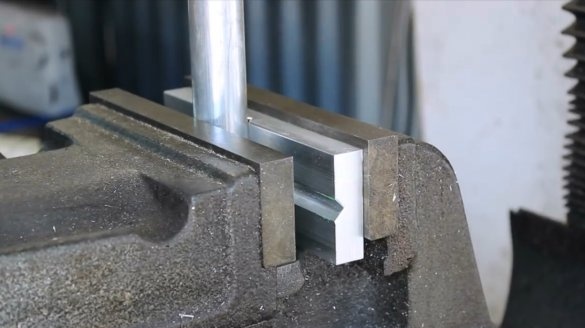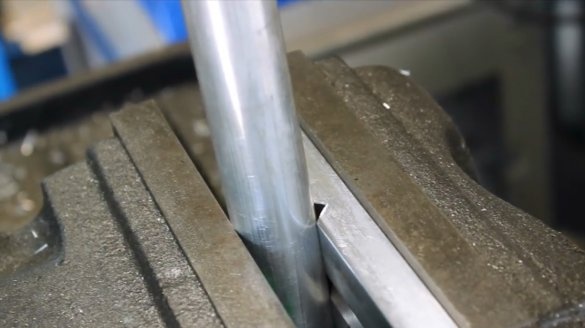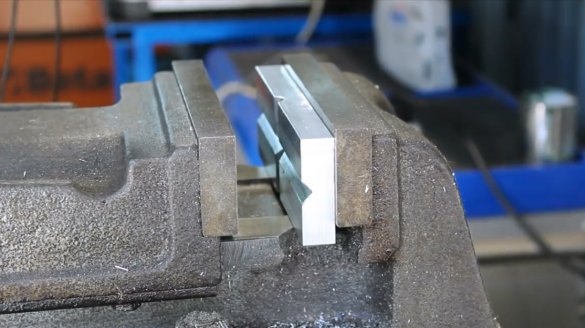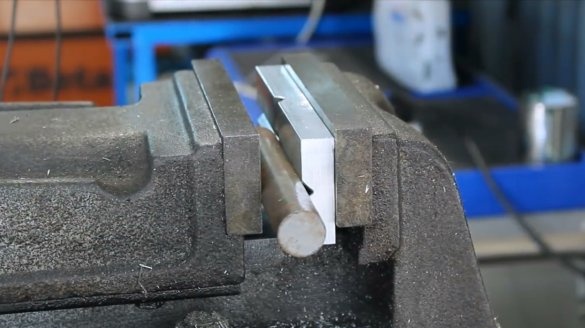When working with milling and drilling machines, it is often necessary to process cylindrical parts, and to fix them reliably in a standard vice of a coordinate table with good accuracy is a rather difficult task.
In this article, the YouTube author of TheDacchio tells you how he made a quick-release sponge with magnets. It allows you to fix the cylindrical workpiece at an angle of 0 and 90 degrees.
Materials
- Aluminum plate 150x50x15 mm
- Round neodymium magnets
- Second glue.
Instruments, used by the author.
- Milling and drilling machine
-
- 90 degree mill
-
-
Manufacturing process.
So, the author selected an aluminum plate 150x50x15mm suitable for his machine. Then, using a digital caliper, I marked up. At the same time, departing from the edge along the width of 25 mm, and along the length of 75 mm. The master took measurements from each edge of the workpiece.
Then he clamped the workpiece in the vice of the table, installed a dial micrometer, and checked the accuracy of the installation by moving the table to the side.
The turn of milling has come. Using a V-shaped 90 degree cutter, cut two grooves. They will be responsible for the installation angle of the workpieces. Since this sponge is quick-detachable, several devices can be made, and the grooves in them can be cut out at other angles.
Almost everything is ready, it remains to embed neodymium magnets on the reverse side. For this, the master measures the diameter of the magnet. In his case, it is almost 10 mm.
Marks the approximate installation location of a pair of magnets, and measures their thickness (1.77 mm). The depth of drilling of the seats will depend on it.
Having installed a cylindrical mill, drills two seats.
But the magnet does not fit a bit, the master had to take a mill with a slightly larger diameter.
Using a second glue, sets the magnets in place. Presses them with an eraser.
That's all, device done.
Sets the sponge in the grip of the coordinate table.
Now checks the quality of fixing the workpiece in different positions.
Even when the hammer taps the displacement, neither the workpiece nor the sponge occurs.
Thanks to the author for a simple but useful tool for the machine!
All good mood, good luck, and interesting ideas!
Author video can be found here.

